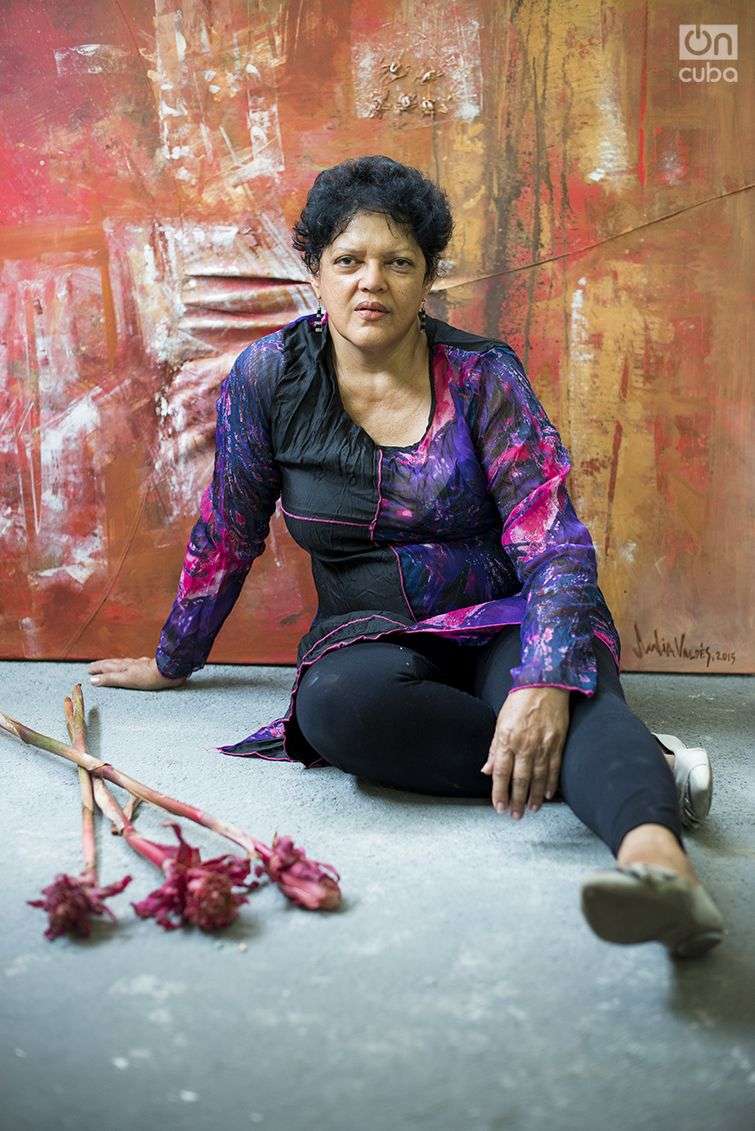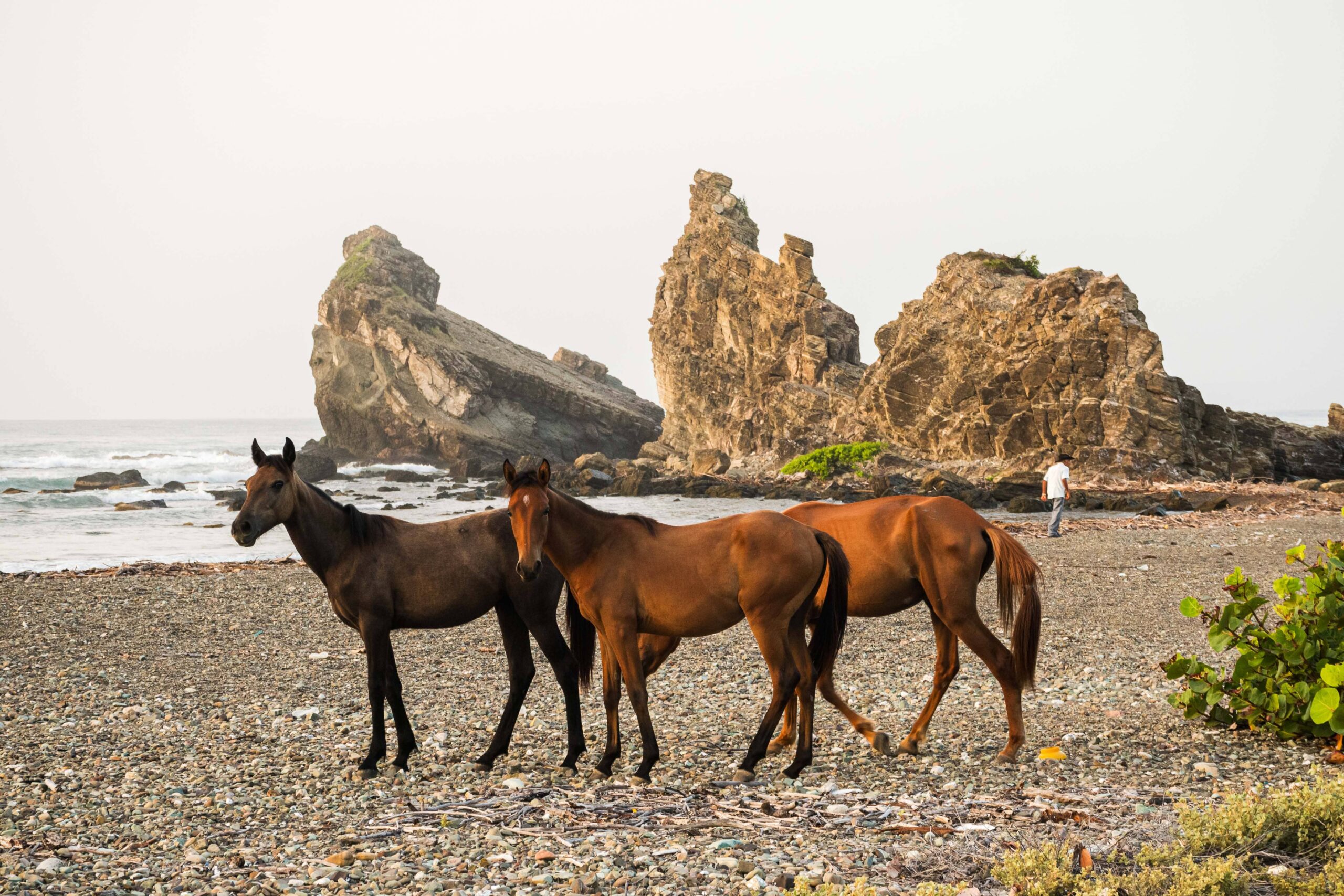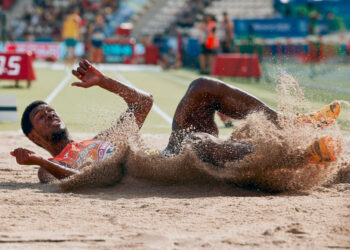From a very young age, Julia—daughter of the well-known Cuban sculptor René Valdés—was surrounded by paintbrushes, chisels, chunks of marble and pieces of wood, and this environment influenced her natural inclination toward the world of visual arts. However, far from following in the footsteps of her father, her “first teacher,” as she calls him, she chose abstract painting, which has been her language for creativity and communication from the very start.
While she extensively studied and is influenced by the work of Jackson Pollock—a representative of so-called Action Painting, a tendency associated with abstract expressionism—Julia says that her chief inspiration has been her teacher Antonio Vidal, “an excellent professor who was not only a well-known painter but also a great educator; he was able to pass on his knowledge, leaving a margin for suggestions and communication with his students.”
As an almost devout follower of abstraction, she describes that tendency as the maximum synthesis of reality based on vivid experiences. “Artists always incorporate autobiographical themes—sometimes consciously and sometimes unconsciously, and personally, I’m not exempt from that reality.”
This artist, who prefers working in the morning and afternoon hours, because “it’s when she can best perceive the colors that play a very central role in her work,” is framed in the 70s Generation, a period of recent Cuban art history that recurrently sang the praises of the revolutionary epic and where figurative art took on a very relevant significance. However, without giving expression to immediate reality, she addressed everyday life from a non-figurative perspective, an interest that she always had and that she maintains, using large-format works, which have a greater impact. “Right now I am setting out to make a piece that is not framed, and that instead remains open—something very experimental.”
During the recently-concluded 12th Havana Biennial, Julia presented the surprising Mi segunda piel (My Second Skin), a project that she plans to expand, and whose media is an active element that expresses visual and tactile textures. “Cloth is not a passive element; it has folds and bumps upon which I place things because I want the cloth to transmit ideas.” At this time, Julia Valdés is concentrating on finishing the last (and tiny) details of her remodeled studio, a platform that will allow her to keep working, because with respect to her masterpiece, she says: “I haven’t made it yet.”

Julia Valdés (Havana, 1952). Cuban painter and printmaker. Graduate of the José Joaquín Tejada School of the Visual Arts in Santiago de Cuba, in 1966, and of the National Art School (ENA), in 1972. She has held numerous collective and solo exhibitions, including El reverso del paisaje, Umbral de la nostalgia, Las puertas del reino, Memoria sobre los muros, Erosiones, Travesía, Todo mezclado and Signos del paisaje, among others. Her work can be found in public and private collections in France, the Dominican Republic, Germany, Colombia, Puerto Rico, United States, Austria and Spain.
Av. 5ta no. 15204 e/ 152 y 160, Reparto Náutico, Playa
+53 7 208 0095 | +53 5 293 9361
juvab@cubarte.cult.cu | www.juliavaldes.com










